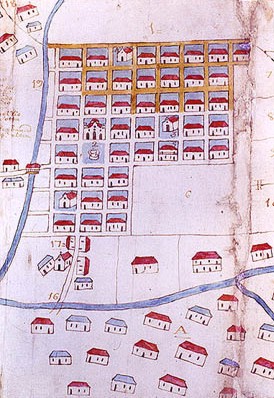Medellín
Medellín is the second-largest city in Colombia and the capital of the department of Antioquia. It is located in the Aburrá Valley, a central region of the Andes Mountains in South America. Known as the "City of Eternal Spring" for its temperate weather, Medellín serves as a major industrial, technological, and cultural hub in Colombia, significantly contributing to the nation's economy.
History[edit | edit source]
The area of modern-day Medellín was originally inhabited by the Aburrá people, one of the many indigenous tribes in the region. The city was founded on March 2, 1616, by the Spanish conquistador Francisco Herrera y Campuzano as "Poblado de San Lorenzo". It was later renamed "Villa de Nuestra Señora de la Candelaria de Medellín" in the 17th century, in honor of the Spanish city of Medellín in Extremadura. Throughout the colonial period, Medellín remained a small but important center for commerce and agriculture.
The 19th and 20th centuries marked significant growth and transformation for Medellín, driven by the coffee boom and the arrival of the railway. The city became a major center for textile manufacturing, which laid the foundation for its industrial prowess. In the late 20th century, Medellín was infamous for being the stronghold of the Medellín Cartel, which had a profound impact on the city's social and economic fabric.
Geography[edit | edit source]
Medellín is situated in the northern part of the Andes, making it a mountainous region with a variety of climates and biodiversity. The city itself is located at an elevation of 1,495 meters (4,905 feet) above sea level, contributing to its mild climate throughout the year.
Economy[edit | edit source]
Today, Medellín's economy is diverse, with strong sectors in manufacturing, finance, services, and technology. The city has made significant strides in innovation and technology, earning it recognition as the most innovative city in the world by the Urban Land Institute in 2013. Medellín's commitment to urban development and innovation is evident in its modern transportation systems, including the Medellín Metro and cable cars, which have been lauded for their role in improving accessibility and reducing social inequality.
Culture[edit | edit source]
Medellín is renowned for its rich cultural scene, including numerous festivals, museums, and theaters. The Feria de las Flores (Flower Festival), held annually in August, is one of the city's most significant events, attracting visitors from around the world. The city is also home to the Museo de Antioquia and the Plaza Botero, which features sculptures by the famous Colombian artist Fernando Botero.
Education[edit | edit source]
The city is a major educational center in Colombia, hosting several universities of national and international repute, such as the University of Antioquia and the National University of Colombia's Medellín campus. These institutions play a crucial role in research, innovation, and the development of the workforce in the region.
Challenges[edit | edit source]
Despite its progress, Medellín faces ongoing challenges, including social inequality, urbanization pressures, and the legacy of drug-related violence. However, through innovative urban planning and social programs, the city has made significant strides in addressing these issues, serving as a model for urban transformation in Latin America.
Search WikiMD
Ad.Tired of being Overweight? Try W8MD's physician weight loss program.
Semaglutide (Ozempic / Wegovy and Tirzepatide (Mounjaro / Zepbound) available.
Advertise on WikiMD
|
WikiMD's Wellness Encyclopedia |
| Let Food Be Thy Medicine Medicine Thy Food - Hippocrates |
Translate this page: - East Asian
中文,
日本,
한국어,
South Asian
हिन्दी,
தமிழ்,
తెలుగు,
Urdu,
ಕನ್ನಡ,
Southeast Asian
Indonesian,
Vietnamese,
Thai,
မြန်မာဘာသာ,
বাংলা
European
español,
Deutsch,
français,
Greek,
português do Brasil,
polski,
română,
русский,
Nederlands,
norsk,
svenska,
suomi,
Italian
Middle Eastern & African
عربى,
Turkish,
Persian,
Hebrew,
Afrikaans,
isiZulu,
Kiswahili,
Other
Bulgarian,
Hungarian,
Czech,
Swedish,
മലയാളം,
मराठी,
ਪੰਜਾਬੀ,
ગુજરાતી,
Portuguese,
Ukrainian
Medical Disclaimer: WikiMD is not a substitute for professional medical advice. The information on WikiMD is provided as an information resource only, may be incorrect, outdated or misleading, and is not to be used or relied on for any diagnostic or treatment purposes. Please consult your health care provider before making any healthcare decisions or for guidance about a specific medical condition. WikiMD expressly disclaims responsibility, and shall have no liability, for any damages, loss, injury, or liability whatsoever suffered as a result of your reliance on the information contained in this site. By visiting this site you agree to the foregoing terms and conditions, which may from time to time be changed or supplemented by WikiMD. If you do not agree to the foregoing terms and conditions, you should not enter or use this site. See full disclaimer.
Credits:Most images are courtesy of Wikimedia commons, and templates, categories Wikipedia, licensed under CC BY SA or similar.
Contributors: Prab R. Tumpati, MD





